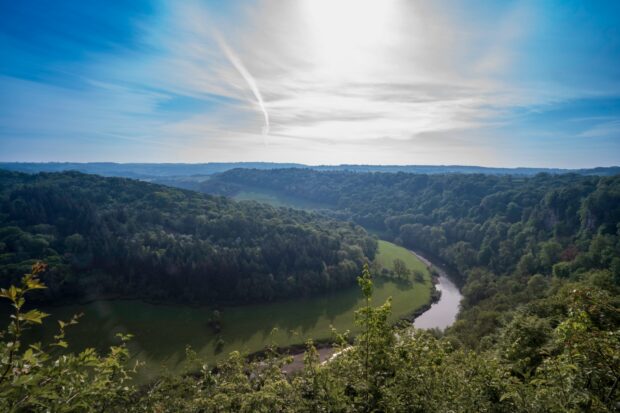 Mark Broadmeadow is the Principal Advisor for Climate Change. Here he looks at key figures from the 2022/23 government tree planting statistics.
Mark Broadmeadow is the Principal Advisor for Climate Change. Here he looks at key figures from the 2022/23 government tree planting statistics.
On the 15 June we published the latest government tree planting statistics.
Overall, tree planting rates in England have increased since last year and we continue to take action towards meeting our tree planting commitments, with 3,128 hectares reported as planted in England in 2022/23 – which is a 40 percent increase on the previous year.
Working with colleagues in Defra and further afield, the Forestry Commission has been at the heart of this increase in tree planting, implementing the ambitions of the England Tree Action Plan which kickstarted tree planting across the country with a holistic approach to growing our tree cover.

We know that the UK wide ambition of planting 30,000 hectares of new woodland annually from May 2024, and the statutory target of reaching 16.5% tree and woodland cover by 2050 is stretching. It is not as simple as just putting trees in the ground but ensuring that they grow to so that we have a resilient resource to help mitigate the climate and nature crisis we face. This is achieved through making certain that woodlands are compliant with the UK Forest Standard (UKFS), thus enabling them to provide these important environmental gains and reducing the likelihood of the negative impacts pests, diseases, natural disasters and other threats can have on a habitat or area.
As well as being an essential tool in climate change mitigation, trees have a large number of positive benefits such as boosting wildlife, providing shelter for livestock, preventing soil erosion, reducing flooding, providing timber, supporting the economy and improving mental health and wellbeing.
Last year we faced some big challenges, very wet weather during the planting season, followed by drought through the summer, did not make it easy for tree planting and establishment. However despite these challenges, tree planting across England increased.
Notable figures from today’s statistics include:
- The area of woodland in England now stands at 1,326 thousand hectares, equivalent to 10.2 percent - three thousand hectares more than a year before. Each and every tree planted can absorb up to 150kg of carbon per year helping us to meet our net zero by 2050 ambitions to reduce the impact of climate change.
- Government funding supported at least 2,721 hectares of woodlands in 2022-23, corresponding to about 4 million trees. Our Investment in woodland creation, expansion and management and peatland restoration deliver wider social, environmental and economic benefits.
- 360,000 trees were planted outside woodland equivalent to about 499 hectares of additional tree canopy– this represents an almost 1000 hectare increase in tree-planting compared to last year. These trees are important for increasing access to nature in urban areas and increasing tree cover closer to where people live
- The percentage of all woodland that is sustainably managed at 31 March 2023 is 58 percent (equating to 768 thousand hectares). This is broadly stable over recent years. Woodlands in active management help boost biodiversity and protect against pests and diseases.
- There was 101 hectares of restoration of open habitats in the nation’s forests and 7 hectares in other woodland. This helps our native habitats thrive and supports the species who depend on them.

We know there is more work to do. This is why, we have a strong pipeline of planting projects supported through our Nature for Climate Fund tree programme, and we are working to increase the number of woods that are managed.
As we continue on an upwards trajectory, our tree planting programme will help us reach net zero by 2050, reduce the impact of climate change and turn the tide on biodiversity decline.
Interested in tree planting? If you’re a landowner, forester, or farmer take a look at what’s on offer to create woodland and find out if you’re eligible to apply.



3 comments
Comment by C Grice posted on
Spinning the figures to show a 40% increase is what we have come to expect from an organisation that year on year rather spectacularly fails to achieve its targets. At least this year the failure is in the region of 50% off target which is better than 70% failure.
Can you explain why the figures are so dismal, and its not down to FC staffing levels or sector capabilities before you go down that route.
Comment by Abi Mansley posted on
Do you count trees planted as part of a farm stewardship scheme? I suspect not. I think you are only getting your data from the FC grants and the narrow definition of woodland.
Comment by Roderick Leslie posted on
Uncertainty, perhaps ? Of agricultural funding, interest rates and the economy & politics in general.